Robby Moroz Film History I
Monday, May 12, 2014
Tuesday, December 17, 2013
The Godfather
1) Relate what was
discussed in class or the text to the screening.
The Godfather was
released in 1972 and was directed by Francis Ford Coppola. It is the iconic
gangster movie, and is also one of the most influential movies of all time. The Godfather tells the story of Don Vito
Corleone, the Patriarch and head of the Corleone family mafia. The Godfather
goes on to show how his youngest son Michael (played by Al Pacino), is put in
the middle of the family business when he returns home from war. The main story
line in the Godfather follows the Corleone who goes through hard times when
rival mafias threaten the Corleone family. Michael, who stated he wouldn’t join
the family business, ends up stepping up when his family needs him, becoming the
Don, and replacing his father.
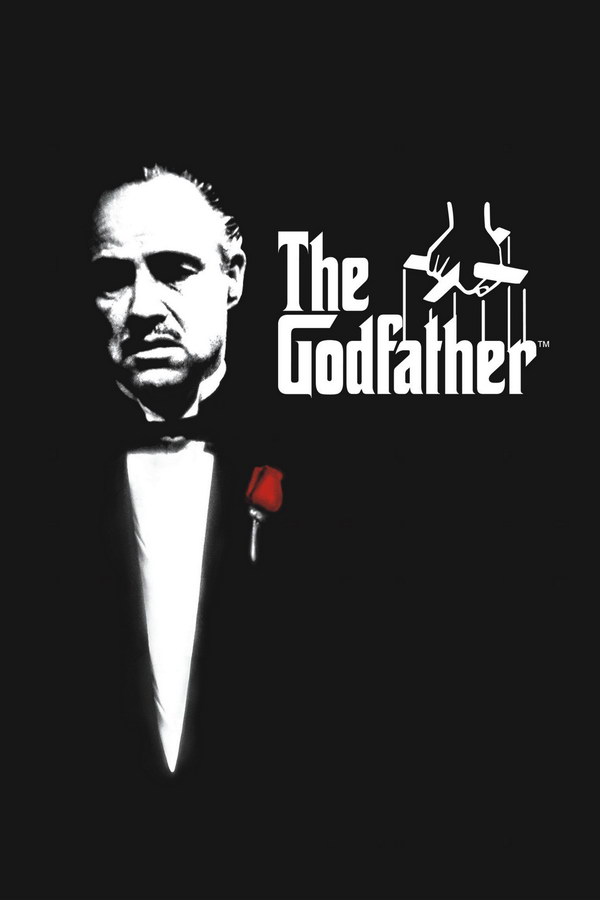
2) Find a related article and summarize the
content.
“Michael comes out with
a gun and leaves the two men for dead. He walks out of the restaurant and
remembers his instructions – drop the gun. The music rises in triumph. Game,
set and match to the Corleones. But something else has happened – Michael, the
good boy in the family, the Ivy League student with a glowing military record,
the son Vito was hoping to save, has crossed over. He has come of age – he is a
made man. The Godfather suddenly reveals itself as not just a gangster
chronicle, or even a series of
magnificent set pieces, but the progress of
Michael towards evil.”
In his article, David
Thomson, dissects the scene where Michael is sent to murder two men while
taking them out to an Italian dinner. It is Michael’s first job as a part of
the family business and is also the turning point for the character. The plan
was, Michael was to go to the bathroom in the middle of dinner where he would
pick up a hidden gun, walk out, and murder the two men. As soon as Michael kills
the men, he begins to change from the role as the good kid of the family, to
the godfather.

3) Apply the article to
the film screened in class.
After reading the
article, I agree with David Thompson. For me, one of the most intriguing parts
of the godfather was watching Michael’s transformation, and the restaurant
scene represents the beginning of his transformation into the godfather. From
that scene on, throughout the rest of the movie we see Michael stray further
and further away from the respectable solider returning home we see at the
beginning of the film, until the baptism scene where we see him fully accept
his role as the godfather.
4) Write a critical
analysis of the film
The Godfather is the
most iconic gangster movie ever, and for good reason, it is known for
revitalizing the gangster genre, and has influence practically every mobster
movie or TV show. The reason it was so groundbreaking was because it wasn’t
just another gangster movie with a bunch of bad guys breaking the law and killing
people. Instead the Godfather exhibits family full of gangsters that we do not
characterize as bad guys, but as the protagonist, and the guy we root for. The
reason behind this is because at no point does one of these gangsters do
something out of greed, instead we see the Corleone’s family as respectable,
because every crime they commit is to protect the family.
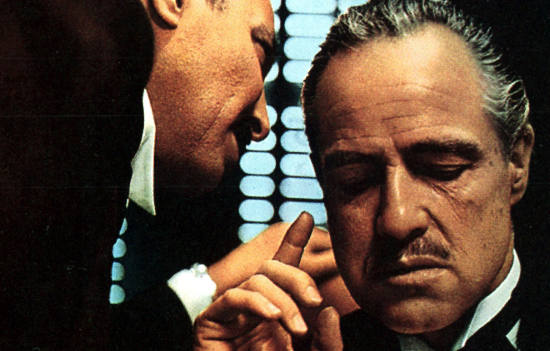
CHECKLIST FOR
PLAGIARISM
1) ( x ) I have not
handed in this assignment for any other class.
2) ( x ) If I reused
any information from other papers I have written for other classes, I clearly
explain that in the paper.
3) ( x ) If I used any
passages word for word, I put quotations around those words, or used
indentation and citation within the text.
4) ( x ) I have not
padded the bibliography. I have used all sources cited in the bibliography in
the text of the paper.
5) ( x ) I have cited
in the bibliography only the pages I personally read.
6) ( x ) I have used
direct quotations only in cases where it could not be stated in another way. I
cited the source within the paper and in the bibliography.
7) ( x ) I did not so
over-use direct quotations that the paper lacks interpretation or originality.
8) ( x ) I checked yes
on steps 1-7 and therefore have been fully transparent about the research and
ideas used in my paper.
Name: Robert
Moroz_____________________________ Date:
12/17/2013____________________________
Wednesday, November 27, 2013
Casablanca
1) Relate what was
discussed in class or the text to the screening.
Casablanca was released in 1942 and is one of the most recognized movies in American cinema. It takes place during WWII in the Moroccan city of Casablanca. In the movie Casablanca is where refugees fleeing from Europe waiting for their chance to escape to the United States. Main character Rick Blaine, played by Humphrey Bogart, owns a popular upscale nightclub called Rick's Café Américain. One night, a woman named Ilsa walks into Rick’s with her husband, Laszlo. When Rick sees her, he immediately recognizes her. At this point of the movie, everyone in the audience must know what Rick and Ilsa’s relationship. The film goes onto explain their past, and how they fell in love in Paris until Ilsa leaves Rick when they decide to leave Paris, so just when you discover an answer, another question arises, Why did Ilsa leave Rick?

2) Find a related article and summarize the
content.
"From a modern perspective, the film reveals
interesting assumptions. Ilsa Lund's role is basically that of a lover and
helpmate to a great man; the movie's real question is, which great man should
she be sleeping with? There is actually no reason why Laszlo cannot get on the
plane alone, leaving Ilsa in Casablanca with Rick, and indeed that is one of
the endings that was briefly considered. But that would be all wrong; the
“happy” ending would be tarnished by self-interest, while the ending we have
allows Rick to be larger, to approach nobility. And it allows us, vicariously
experiencing all of these things in the theater, to warm in the glow of his
heroism."
In his article of Casablanca, Robert Ebert describes the last scene where Rick tells Ilsa to get on the plane with his husband Laszlo instead of boarding the plane with them, and continuing his relationship with Ilsa. He says that the ending is not necessarily "happy" for Rick, but it does do justice to Rick as a character. It shows him as a selfless man who is willing to let go of the woman he loves so she could have a better life with her husband.

3) Apply the article to
the film screened in class.
After reading Ebert's article, I see now how Rick's decision perfectly concludes Casablanca. True, the movie could have ended with Rick and Isla staying in Casablanca to be together, but instead Rick chooses to make a noble decision and send Isla on the Plane with Laszlo. By doing this, Rick take on more of a role of a hero, sacrificing what he wants most for what is best for Isla.
4) Write a critical
analysis of the film
Casablanca is another american classic, but unlike other extraordinary movies, it was made in a rather ordinary fashion, it was just one of hundreds of films produced by Hollywood every year, and no one that was involved with filming expected it to be anything special, but lo and behold it won three academy awards and went down in history as one of the most recognizable films of american cinema.
CHECKLIST FOR
PLAGIARISM
1) ( x ) I have not
handed in this assignment for any other class.
2) ( x ) If I reused
any information from other papers I have written for other classes, I clearly
explain that in the paper.
3) ( x ) If I used any
passages word for word, I put quotations around those words, or used
indentation and citation within the text.
4) ( x ) I have not
padded the bibliography. I have used all sources cited in the bibliography in
the text of the paper.
5) ( x ) I have cited
in the bibliography only the pages I personally read.
6) ( x ) I have used
direct quotations only in cases where it could not be stated in another way. I
cited the source within the paper and in the bibliography.
7) ( x ) I did not so
over-use direct quotations that the paper lacks interpretation or originality.
8) ( x ) I checked yes
on steps 1-7 and therefore have been fully transparent about the research and
ideas used in my paper.
Name: Robert
Moroz_____________________________ Date:
11/27/2013____________________________
Wednesday, November 20, 2013
Citizen Kane
1) Relate what was
discussed in class or the text to the screening.
Citizen Kane was
released in 1941. It was directed, produced, starred and was co-written by
Orson Welles. The film is about wealthy newspaper tycoon Charles Foster Kane,
who was born into a poor family in Colorado. At a young age, Charles was forces
away from his mother and sent to the east to be educated, also where he would
go into the newspaper business at age 25. However, the film Citizen Kane does
not begin with Charles at a young age, but instead it begins with Charles
Foster Kane’s death, and with Charles’ final word “Rosebud”. News of his death spreads,
and newspaper reporters become determined to find the meaning of “Rosebud” and
why it was the last thing he said. The Movie follows Reporter Jerry Thompson as
he interviews people close to Kane. Each interview leads to a flashback
revealing parts of Kane’s life. Those interviewed includes; his friends, business
partners, and his second ex-wife, Susan.

2) Find a related article and summarize the content.
“Visually, Welles and
legendary cinematographer Gregg Toland forged a dramatic style combining such
techniques as extreme deep focus, varied camera angles including low angles
revealing set ceilings, and unconventional use of lighting and deep shadows anticipating
the film noir style. Individually, most of these techniques had been pioneered
in other films, but Citizen Kane masterfully brought them together with
unprecedented acumen and maturity.” -Steven
D. Greydanus
In Greydanus’ review of Citizen Kane, he points out Orson Welles’ use of cinematography, which in Citizen Kane, is regarded as one of the best examples of cinematography in all of film history. Welles used things like camera angles and lighting to express the happiness and sadness of the character Charles Foster Kane. Welles also used wide angle lenses in order to keep multiple things in a scene in focus at the same time. Also, Welles utilized shadows throughout the entire movie to add more effect to each scene.
3) Apply the article to
the film screened in class.
After reading this
article I can recognize how Orson Welles used cinematography in Citizen Kane.
In the flashbacks of Charles Foster Kane’s life in his happier earlier years,
each scene jumps right on to the next giving Kane a more of a lively feeling. He
is shot from a normal angle and with high key lighting, so that you can see his
face pretty normally. When he is older, Kane is much more powerful, with that
in mind Welles shot him from a lower angle so that it is almost like you are
looking up to him. Also in his later years Charles Foster Kane is sad and corrupt,
so low key lighting was used to show more contrast.


4) Write a critical analysis of the film
Citizen Kane truly is
more that it appears to be. At first glance it is an intriguing movie looking
at the life of a wealthy newspaper publisher who learns first hand that money can’t
buy happiness. However when you watch the film a few more times, you begin to
see all of the little things that Orson Welles did. Everything in citizen Kane
has some sort of significance, from the color of the clothing to the scenes
inside the palace of Xanadu that seem to drag on. It is this attention to
detail that Orson Welles possessed that made Citizen Kane a work of art.

CHECKLIST FOR PLAGIARISM
1) ( x ) I have not
handed in this assignment for any other class.
2) ( x ) If I reused
any information from other papers I have written for other classes, I clearly
explain that in the paper.
3) ( x ) If I used any
passages word for word, I put quotations around those words, or used
indentation and citation within the text.
4) ( x ) I have not
padded the bibliography. I have used all sources cited in the bibliography in
the text of the paper.
5) ( x ) I have cited
in the bibliography only the pages I personally read.
6) ( x ) I have used
direct quotations only in cases where it could not be stated in another way. I
cited the source within the paper and in the bibliography.
7) ( x ) I did not so
over-use direct quotations that the paper lacks interpretation or originality.
8) ( x ) I checked yes
on steps 1-7 and therefore have been fully transparent about the research and
ideas used in my paper.
Name: Robert
Moroz_____________________________ Date:
11/20/2013____________________________
Wednesday, November 6, 2013
Gone With the Wind
1) Relate what was
discussed in class or the text to the screening.
The novel, “Gone with
the Wind” was written in 1936 by Margaret Mitchell and was one of the most popular
novels. The book is about a young southern bell named Scarlett O’Hara and her
experiences involving the south during the civil war. The book was such a
success that a film adaptation was to be released three years later in 1939.
The film “Gone with the Wind” would go on to be known as an American classic.
“Gone with the Wind” is also an important film from a racial point of view as
well, as it was the first movie where a black actor or actress (Hattie
McDaniel) was nominated, and won the academy award (best supporting actress).
The film would also go on to win a number of other awards that year, including
best picture.
2) Find a related article and summarize the
content.
“It fascinated
audiences to see her high-wire defiance in a male chauvinist world, but
eventually such behavior had to be punished, and that is what “Frankly, my
dear, I don't give a damn” is all about. If “GWTW” had ended with Scarlett's
unquestioned triumph, it might not have been nearly as successful. Its original
audiences wanted to see her swatted down--even though, of course, tomorrow
would be another day.”
In Roger Ebert’s
article on “Gone with the Wind” he discusses Scarlet’s, take charge (and
slightly arrogant) attitude. He goes on
to point out how Rhett’s famous line “Frankly, my dear, I don't give a damn” is
so powerful. According to Ebert, Rhett punishes her for her defiant ways during
the entire movie. When Rhett says this to scarlet, it is one of the few times she
is denied what she wants in the movie.
3) Apply the article to
the film screened in class.
After reading the
article I came to agree with Ebert. Rhett’s last comment he says to Scarlett in
a way teaches her a lesson. I found that during the movie Scarlett’s character showed
a lot of maturing, but at the same time, she also acted immature at times, like
when she repeatedly threw herself at Ashley. At the last part of the movie, she
throws herself at Rhett having only just realizing her love for him, In a way
it seems like it’s what Scarlett deserves after never returning Rhett’s love
after all he did for her.

4) Write a critical
analysis of the film
“Gone with the Wind” is
thought to be the American classic, and for good reason. The story telling is
top notch and the performances given by actors such as, Clark Gable, Vivien Leigh and Hattie McDaniel are nothing short
of outstanding. If I were a fan of Margaret
Mitchell novel in 1936, the film adaptation surely would have satisfied me as
it did for the American public in 1939.

CHECKLIST FOR PLAGIARISM
1) ( x ) I have not handed in this assignment for any other class.
2) ( x ) If I reused any information from other papers I have written for other classes, I clearly explain that in the paper.
3) ( x ) If I used any passages word for word, I put quotations around those words, or used indentation and citation within the text.
4) ( x ) I have not padded the bibliography. I have used all sources cited in the bibliography in the text of the paper.
5) ( x ) I have cited in the bibliography only the pages I personally read.
6) ( x ) I have used direct quotations only in cases where it could not be stated in another way. I cited the source within the paper and in the bibliography.
7) ( x ) I did not so over-use direct quotations that the paper lacks interpretation or originality.
8) ( x ) I checked yes on steps 1-7 and therefore have been fully transparent about the research and ideas used in my paper.
Name: Robert Moroz_____________________________ Date: 11/6/2013____________________________
Wednesday, October 23, 2013
Stagecoach
1) Relate what was
discussed in class or the text to the screening.
In the late 30s and
early 40s some of the best films of all time were made. This time period would
be remembered as the greatest time period in film history, and one of the most
important films made in this time is Stagecoach, directed by one of the most iconic
film makers, John Ford. Stagecoach is known for revitalizing the western genre,
which at the time was thought to be boring. The film is about a group of people
from all walks of life are traveling from Tonto to Lordsburg. The stagecoach
was a metaphor for society, and each passenger represented a different role in society.
The passengers included a banker, a sheriff, a salesman, a gambler, a
prostitute, a doctor, a wife, a stage driver, and an outlaw.
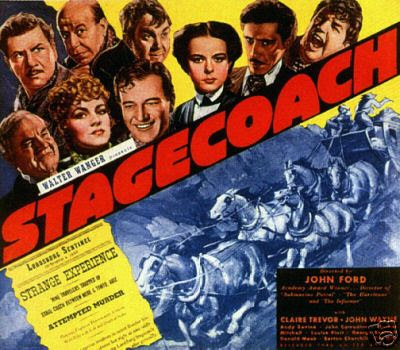
2) Find a related article and summarize the
content.
http://www.decentfilms.com/reviews/stagecoach
“Still, there is
subtlety and nuance in the way Stagecoach develops its characters and their
story-arcs. It may respect the dissolute gambler Hatfield to a point for his
vestigial courtliness and sense of honor, but it pointedly contrasts Hatfield’s
high-handed disdain for the individual of the lowest social standing, Dallas… Later,
Hatfield makes a sickening decision at a critical moment that, however well
intended, permanently alters our perception of the character.”
In Steven D. Greydanus’
review of stagecoach, he brings up the character of the gambler named,
Hatfield. In the movie, Hatfield is portrayed as a southern gentleman. He shows
his nature when he acts honorable toward the wife. However, he doesn't treat
the prostitute, Dallas and the “critical moment” Steven refers to, is regarding
a scene where the stagecoach gets attacked by Indians, Hatfield sticks a
revolver to the wife’s head and with the last bullet, he planned to kill her in
order to save her from what could of happened to her if she was captured. However
just before he pulls the trigger, the stage coach is saved by the army.

3) Apply the article to
the film screened in class.
After reading this
article, I agree and disagree with Steven’s statement that our perception of
Hatfield had been altered. I agree that I had mixed feeling about Hatfield when
he didn't treat Dallas with the same respect as with the wife. However I feel
that Hatfield’s decision to shoot the wife did not make me think less of him,
instead it did the opposite. Hatfield did it out of mercy. At first it does not
seem like it, but this decision that Hatfield made, only made his character
more of a gentleman.
4) Write a critical
analysis of the film

Stagecoach is the movie
that brought western movies back to “A” status; it also legitimized the career
of one of America’s most beloved stars, John Wayne. The characters in the movie
were all memorable; the performances by the actors were top notch as well. Characters
like the alcoholic doctor, the prostitute with the heart of gold, and the
revenge-driven outlaw, make Stagecoach the American classic that it is.
CHECKLIST FOR
PLAGIARISM
1) ( x ) I have not
handed in this assignment for any other class.
2) ( x ) If I reused
any information from other papers I have written for other classes, I clearly
explain that in the paper.
3) ( x ) If I used any
passages word for word, I put quotations around those words, or used
indentation and citation within the text.
4) ( x ) I have not
padded the bibliography. I have used all sources cited in the bibliography in
the text of the paper.
5) ( x ) I have cited
in the bibliography only the pages I personally read.
6) ( x ) I have used
direct quotations only in cases where it could not be stated in another way. I
cited the source within the paper and in the bibliography.
7) ( x ) I did not so
over-use direct quotations that the paper lacks interpretation or originality.
8) ( x ) I checked yes
on steps 1-7 and therefore have been fully transparent about the research and
ideas used in my paper.
Name: Robert
Moroz_____________________________ Date:
10/23/2013____________________________
Tuesday, October 22, 2013
It Happened One Night
1) Relate what was discussed in class or the text to the screening.
By the 1930s the film industry began to change, and the biggest change was that films now featured sound. However, there was another change in film; however this change did not add anything to film instead censored what was allowed in movies. By the early 1930 the Catholic Legion of Decency wrote the Production Code, which stated a list of forbidden material for films such as sex, drugs, consumption of alcohol and offensive words. As a result of the production code, women’s roles in movies changed as well, women’s roles were now strong, smart, workers as opposed to before the code when women’s roles were more sexually liberated. This gave way for screw ball comedy, which was largely featured a war of the sexes. One of the greatest screw ball comedies is It Happened One Night, directed by Frank Capra in 1934. The film follows Ellie Andrews, (Claudette Colbert) a spoiled runaway who while on a bus to New York, encounters Peter Warne, (Clark Gable) a reporter who offers to help Ellie out in return for a story on her.
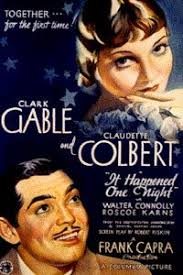
2) Find a related article and summarize the content.
http://www.telegraph.co.uk/culture/film/filmreviews/8094021/It-Happened-One-Night-review.html
“It’s scarcely believable that Capra’s film is nearly eighty years old. Colbert is headstrong, delightful, irresistible. Gable is edgier, less mannered than he would later become…”
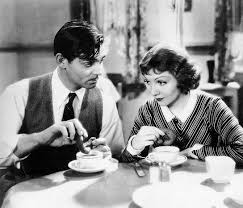
In his article, Sukhdev Sandhu praises the performances by Clark Gable and Claudette Colbert, and how they made It Happened One Night, along with the witty dialogue, such an enjoyable film even by today’s standards. He goes on to write how romantic comedies today don’t hold up as well as It Happened One Night.
3) Apply the article to the film screened in class.
I fully agree with this article. Clarke Gable performance in the film was top notch, especially toward the end when he acts colder toward Ellie because he is saddened that he will never see her again. Claudette Colbert’s performance was also second to none, as she played the role of a spoiled heiress relying on Peter to get her out of situations. These portrayals along with the dialogue make this film a classic.
4) Write a critical analysis of the film

It Happened One Night is in my opinion, the embodiment of screw ball comedy. The dialogue between Peter and Ellie is truly a pleasure to watch. Classic scenes such as the wall of Jericho and the hitchhiking scene make this movie all the more memorable. Romantic comedies today have a thing to learn from Frank Capra and his film, in fact one could make a strong case that It Happened One Night, is the original romantic comedy.
CHECKLIST FOR PLAGIARISM
1) ( x ) I have not handed in this assignment for any other class.
2) ( x ) If I reused any information from other papers I have written for other classes, I clearly explain that in the paper.
3) ( x ) If I used any passages word for word, I put quotations around those words, or used indentation and citation within the text.
4) ( x ) I have not padded the bibliography. I have used all sources cited in the bibliography in the text of the paper.
5) ( x ) I have cited in the bibliography only the pages I personally read.
6) ( x ) I have used direct quotations only in cases where it could not be stated in another way. I cited the source within the paper and in the bibliography.
7) ( x ) I did not so over-use direct quotations that the paper lacks interpretation or originality.
8) ( x ) I checked yes on steps 1-7 and therefore have been fully transparent about the research and ideas used in my paper.
Name: Robert Moroz_____________________________ Date: 10/16/2013____________________________
By the 1930s the film industry began to change, and the biggest change was that films now featured sound. However, there was another change in film; however this change did not add anything to film instead censored what was allowed in movies. By the early 1930 the Catholic Legion of Decency wrote the Production Code, which stated a list of forbidden material for films such as sex, drugs, consumption of alcohol and offensive words. As a result of the production code, women’s roles in movies changed as well, women’s roles were now strong, smart, workers as opposed to before the code when women’s roles were more sexually liberated. This gave way for screw ball comedy, which was largely featured a war of the sexes. One of the greatest screw ball comedies is It Happened One Night, directed by Frank Capra in 1934. The film follows Ellie Andrews, (Claudette Colbert) a spoiled runaway who while on a bus to New York, encounters Peter Warne, (Clark Gable) a reporter who offers to help Ellie out in return for a story on her.
2) Find a related article and summarize the content.
http://www.telegraph.co.uk/culture/film/filmreviews/8094021/It-Happened-One-Night-review.html
“It’s scarcely believable that Capra’s film is nearly eighty years old. Colbert is headstrong, delightful, irresistible. Gable is edgier, less mannered than he would later become…”
In his article, Sukhdev Sandhu praises the performances by Clark Gable and Claudette Colbert, and how they made It Happened One Night, along with the witty dialogue, such an enjoyable film even by today’s standards. He goes on to write how romantic comedies today don’t hold up as well as It Happened One Night.
3) Apply the article to the film screened in class.
I fully agree with this article. Clarke Gable performance in the film was top notch, especially toward the end when he acts colder toward Ellie because he is saddened that he will never see her again. Claudette Colbert’s performance was also second to none, as she played the role of a spoiled heiress relying on Peter to get her out of situations. These portrayals along with the dialogue make this film a classic.
4) Write a critical analysis of the film
It Happened One Night is in my opinion, the embodiment of screw ball comedy. The dialogue between Peter and Ellie is truly a pleasure to watch. Classic scenes such as the wall of Jericho and the hitchhiking scene make this movie all the more memorable. Romantic comedies today have a thing to learn from Frank Capra and his film, in fact one could make a strong case that It Happened One Night, is the original romantic comedy.
CHECKLIST FOR PLAGIARISM
1) ( x ) I have not handed in this assignment for any other class.
2) ( x ) If I reused any information from other papers I have written for other classes, I clearly explain that in the paper.
3) ( x ) If I used any passages word for word, I put quotations around those words, or used indentation and citation within the text.
4) ( x ) I have not padded the bibliography. I have used all sources cited in the bibliography in the text of the paper.
5) ( x ) I have cited in the bibliography only the pages I personally read.
6) ( x ) I have used direct quotations only in cases where it could not be stated in another way. I cited the source within the paper and in the bibliography.
7) ( x ) I did not so over-use direct quotations that the paper lacks interpretation or originality.
8) ( x ) I checked yes on steps 1-7 and therefore have been fully transparent about the research and ideas used in my paper.
Name: Robert Moroz_____________________________ Date: 10/16/2013____________________________
Subscribe to:
Posts (Atom)